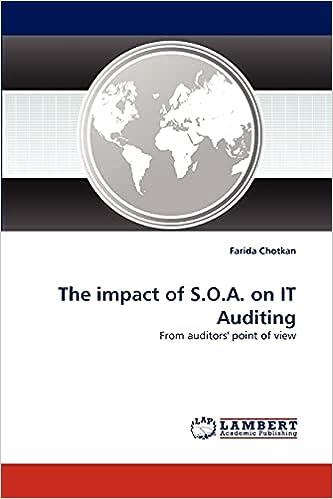Question
Assume that Miss Bebe Nouveaune is born on July 1 of this year (July 1 is the first day of the KiwiSaver financial year). On
Assume that Miss Bebe Nouveaune is born on July 1 of this year (July 1 is the first day of the KiwiSaver financial year). On this day her grandparents deposit $4,000 into a KiwiSaver account for her ($1,000 from each). So, thats $4,000 deposited at t = 0. Assume that on every subsequent birthday up to and including her 18th birthday, Bebes parents deposit an additional $1,000 into her KiwiSaver account. Thats almost $20 a week. Assume that the deposit on her 18th birthday does not attract any slice of the member tax credit. So, thats $1,000 deposited on each of t = 1 through t = 18. Once Bebe turns 18, she starts university and her parents never again contribute money to her KiwiSaver account. Bebe studies at university for three years during which she takes a contributions holiday and does not contribute money to her KiwiSaver account. (As an aside, if you are working, and you take a contributions holiday, then so too does your employer.) So, thats $0 deposited from t = 19 through t = 21. Bebe graduates from university on her 21st birthday with a BCom in Finance. Hooray! Unfortunately, Bebe is unemployed for one year after graduation (because two recessions from now she has trouble getting a job). So, she does not start working until t = 22. Bebes banking salary is $100,000 in her first year of work, paid annually in arrears, but grows by a 4% combined COLA and promotion adjustment per year until she is 65. So, to be clear, she gets a lump sum gross salary of $100,000 at t = 23, and then $104,000 at t = 24, etc. Note that these cash flows can go on the timeline, but they are not being discounted, because we are modelling only the KiwiSaver account itself. I figure $100,000 at t = 23 is comparable to a good banking salary for a new graduate in todays dollars. On Bebes 23rd birthday, and every birthday up to an including her 65th, Bebe contributes 8% of her gross annual salary to her KiwiSaver account as a lump sum; Bebes employer also contributes 3% (the minimum compulsory employer contribution) of Bebes gross annual salary to her KiwiSaver account at the same time, but only 67% of this, that is 2.01%, actually arrives in the KiwiSaver account.12 So, thats 10.01% of her growing salary deposited on each of t = 23 through t = 65 (i.e., 43 deposits). Assume that the Government pays into Bebes KiwiSaver account a member tax credit (its actually just cash) of $521.43 on each of Bebes birthdays from 23 through 65 (anyone 18 or over gets this $521.43 if they contribute at least $1,042.86 each year; employer contributions and government contributions do not count towards this).13 Thats an extra $521.43 deposited on each of t = 23 through t = 65 (i.e., 43 more deposits). Assume that Bebes KiwiSaver account earns a constant 7.5% per annum after taxes and fees over her entire lifetime.
?a?Assume that at age 65 Bebe annuitizes her KiwiSaver account balance.14 She withdraws her money as a growing annuity due, growing at a COLA adjustment of g = 0.05 per annum. That is, I want you to assume she will withdraw a cash flow C on her 65th birthday, C(1+g) on her 66th birthday, ..., up to C(1+g)29 on her 94th birthday (a growing annuity due of 30 payments) and show me how you solved algebraically for C. Give me a ballpark figure for what this C number represents in todays dollars?
Step by Step Solution
There are 3 Steps involved in it
Step: 1

Get Instant Access to Expert-Tailored Solutions
See step-by-step solutions with expert insights and AI powered tools for academic success
Step: 2

Step: 3

Ace Your Homework with AI
Get the answers you need in no time with our AI-driven, step-by-step assistance
Get Started


